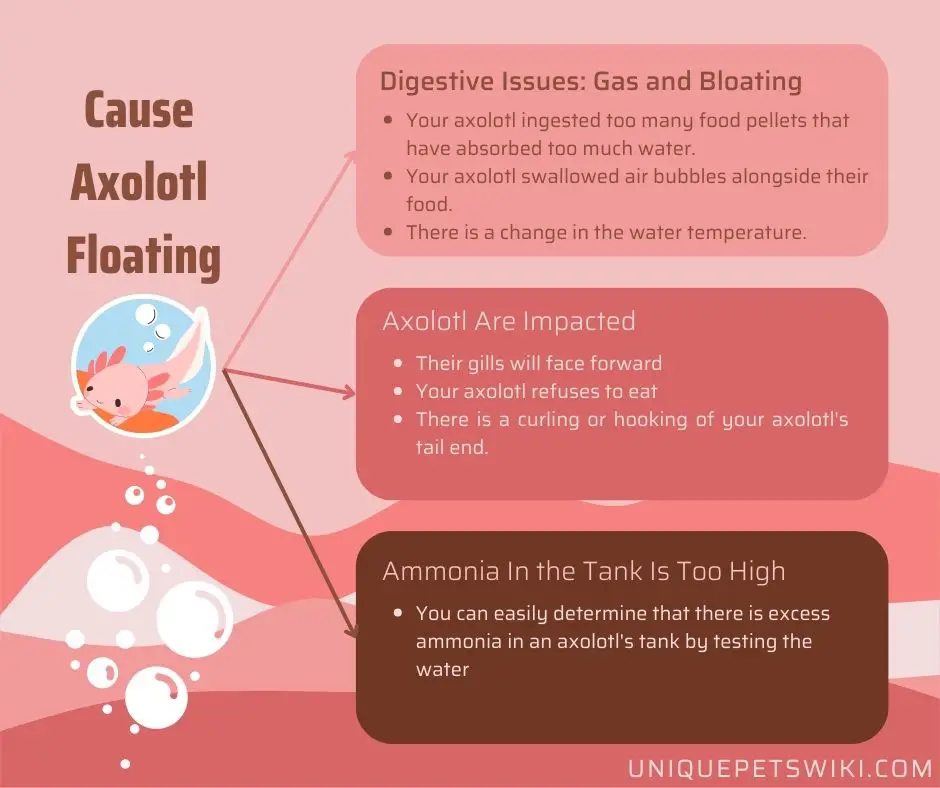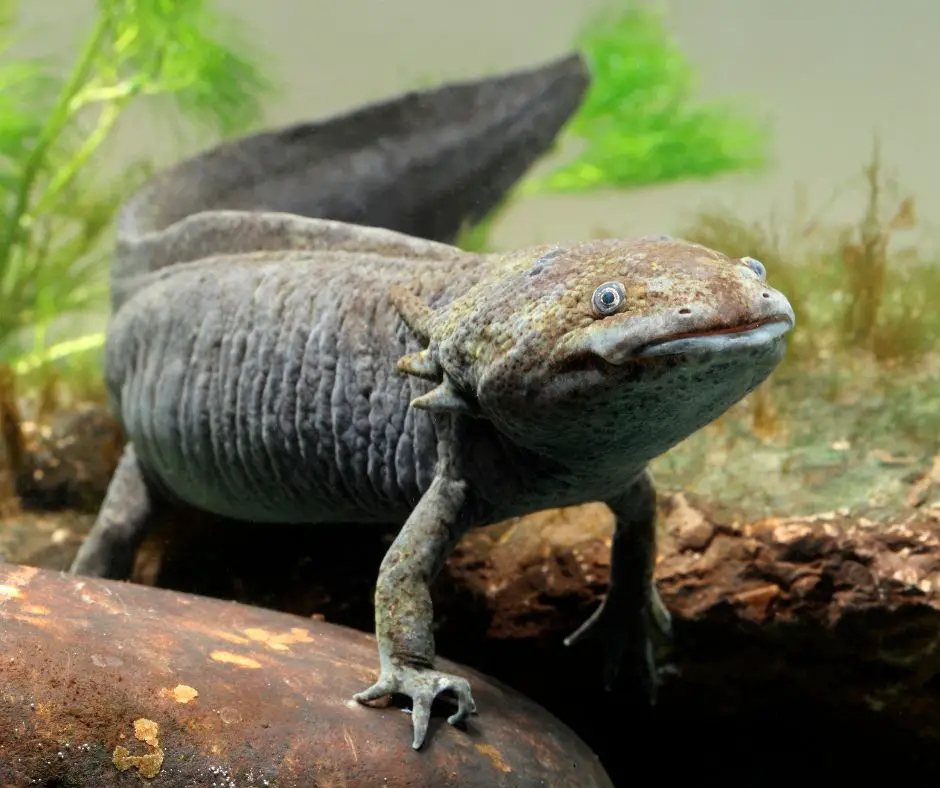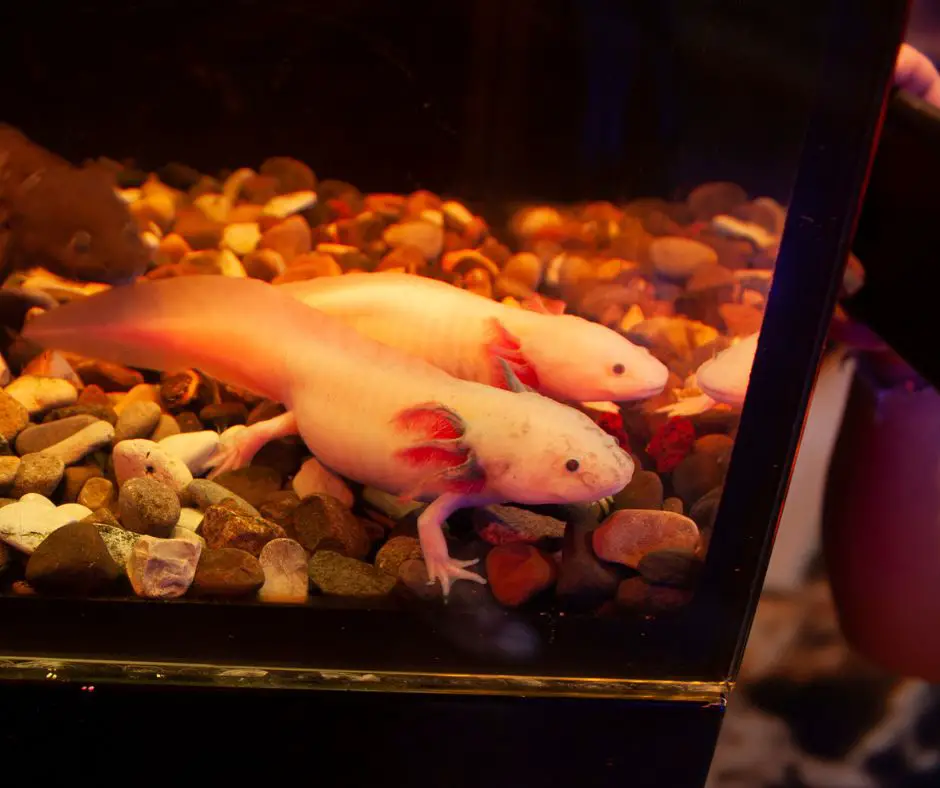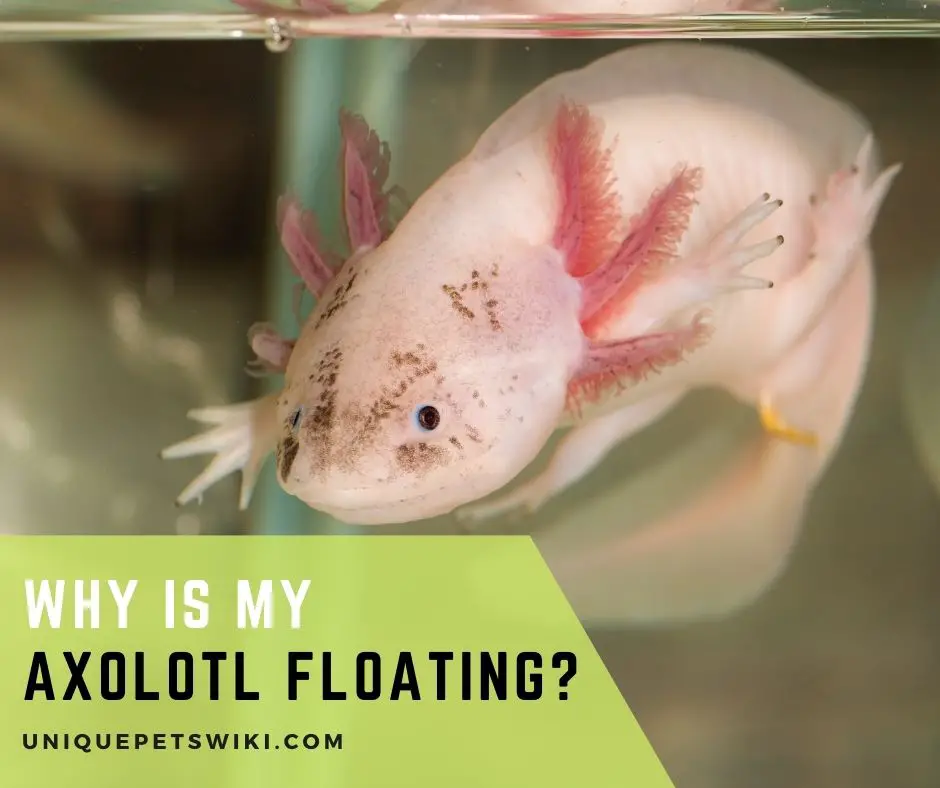Axolotl, also known as walking fish or the Mexican walking fish, are water-dwelling amphibians. From their name, axolotls spend their time walking along the bottom of their watery home.
However, you may be surprised as a new owner if you notice that your axolotl floats on the tank surface rather than walking.
It is normal for axolotls to float, but this can also indicate something wrong with your pet. There are several reasons why axolotl floats, such as swallowing too much air from food or air bubbles, it is impacted, too much ammonia in their water, etc.
As a responsible owner, you should differentiate between normal and abnormal floating to help ensure you take the necessary means to keep your axolotl safe.
This article will provide all the information you need to know about axolotl floating and what you can do when this happens.
Contents
Does Floating Mean Your Axolotl Is Dying?
Generally, the axolotl will first sink when they die and then float to the water surface after one or two days. Their tank will start to smell due to the decay of your axolotl body.
This shows that floating doesn’t usually mean that your axolotl is dying, but it can indicate that something is wrong with it.
Once you notice that your axolotl is floating, you can confirm whether it is still moving to ensure it is still alive.

Can Axolotl Play Dead?
One of the unusual habits of an axolotl is that they can play dead. The two main reasons why axolotl can play dead are:
- Your axolotl enjoys being carried by the current.
- Your axolotl is stressed.
An axolotl playing dead usually stays still for about 10-40 seconds before it starts to move. If your axolotl is floating, all you have to do is to scare them, and they will go back to the bottom.
However, if your axolotl remains floating after scaring them, then something may be wrong with them.
Why Is Axolotl Floating?
Generally, it is not natural for axolotls to float because they are amphibians, and they like walking and dwelling at the water bottom. Your axolotls can float if they are bloated, impacted, or have excess ammonia in their tank.
This can then stress out your axolotl leading to further health problems if not addressed quickly. You can prevent your axolotl from floating by determining what is causing it and then addressing it.

Digestive Issues: Gas and Bloating
One of the common causes of floating in axolotl is digestive issues like bloating and gas buildup. Your axolotl can become bloated due to several reasons, such as:
- Your axolotl ingested too many food pellets that have absorbed too much water.
- Your axolotl swallowed air bubbles alongside their food.
- There is a change in the water temperature.
You can easily determine when an axolotl is floating because it swallows air bubbles. This is because they usually float with their backs on the water’s surface instead of inverted position.
Owners can fix floating due to gas buildup by scaring the axolotl, and you will see as they swim back to the bottom. You can also prevent this from happening through the following steps:
- Avoid overfeeding your axolotl and feeding them very often.
- Try to soak your axolotl food pellets before feeding them.
- Monitor the water quality in your axolotl tank regularly to help ensure there are no sudden temperature changes.
Axolotl Are Impacted
Another common cause of floating in axolotl is impaction. Axolotls are prolific eaters and can ingest anything that can go through their mouth, including substrates.
Your axolotl can then get impacted if they ingest something that is too large for them, like rocks, gravel, large food, etc.
Apart from floating, some of the other signs that indicate that your axolotl is impacted are:
- Their gills will face forward
- Your axolotl refuses to eat
- There is a curling or hooking of your axolotl’s tail end.
You can treat impaction in axolotl by cooling your axolotl’s environment using a chiller, ice, etc. Cooling their environment will help them either excrete what is stuck in their stomach or regurgitate it.
However, you may need to consult with a vet if they still have a problem passing out the mass as they may need surgery.
Impaction in axolotl can be fatal if not treated immediately. However, a great thing to do as a responsible axolotl owner is to take measures that can prevent this from happening to them in the first place.
You can try and prevent impaction in axolotl by using sand, fine gravel, or rocks that are quite larger than your axolotl’s head to design their tank.
Ammonia In the Tank Is Too High
Axolotls can also float if there is excess ammonia in their tank. An axolotl’s tank can experience ammonia buildup if you don’t regularly clean their tank, and there are axolotl’s feces, leftover foods, etc., in their tank.
You can easily determine that there is excess ammonia in an axolotl’s tank by testing the water. There are several testing strips suitable for testing for ammonia, and all you have to do is follow the instructions provided.
Once you detect a high ammonia content in the water, the next step is to reduce the ammonia content in the tank. The best way to do this is to remove half of the water in the tank and replace it with an equal amount of new water.
You should also clean your axolotl’s tank regularly to remove uneaten foods, feces, etc. You may also need to consult with an aquatic store for advice if your axolotl tank requires adjustments, especially for ammonia, very often.
What To Do If Your Axolotl Is Floating?
It can be quite shocking when you find your axolotl floating on the water surface. Here are some things that you can do if your axolotl is floating to treat the problem.

Observe The Axolotl And Try To Scare Them
The first thing to do when you notice that your axolotl is floating is to observe their floating position. Apart from their floating position, you should also observe how long they are floating and doing it frequently.
After observing, you can then try and scare your axolotl, and you will notice that they will swim to the bottom.
However, this usually works if your axolotl is floating because of air bubbles. Your axolotl may not swim to the bottom if their water condition is poor or suffering from a health condition.
Test The Water for Ammonia and Change Water
It is recommended that you always test your axolotl water regularly for ammonia buildup, even if your axolotl is not floating. This is because the buildup of ammonia can be fatal to axolotl health.
You can then replace half of the water in your axolotl tank with clean water free from ammonia if the test shows ammonia buildup.
Aquarium Ammonia Test Strips
- HOME TESTING KIT - Ready to use aquarium test strips for your convenience; tests Ammonia levels in your aquarium – catches and prevents invisible water problems and keeps your fish safe
- ACCURATE AND FAST RESULTS - Ammonia test strips come with a detailed color chart, detect low levels of ammonia, help prevent any invisible water problems and keep your fish safe – ideal for all lifestyle stages
- EASY TO USE: Simply repeat dipping the aquarium test strip in water for 30 seconds, and compare with color chart for instant and reliable results – use multiple times a week for new aquariums and weekly or when problems arise for mature aquariums
- SHELF LIFE: 100 testing strips in total; 50 strips packed in a bottle and 50 strips in a storage bag for prolonged shelf life, so you can test your aquarium water quality at regular intervals and don't have to rush using all 100 strips
- MULTIPLE USES: Can be used to test freshwater and saltwater aquariums, fish ponds and fish bowls and fish tanks
Last update on 2022-12-29 / Affiliate links / Images from Amazon Product Advertising API
Don’t Feed the Axolotl for a Few Days
You can treat axolotl floating because they are bloated by not feeding them for a few days. This is going to help remove the bloat from their stomach, and you will notice that everything is back to normal.
However, this can take a few days to solve the problem.
Note: Axolotls can survive for some days without eating, and they will be fine during the whole process.
Gradually Reduce the Temperature of the Water or Try Refrigeration
You can treat issues where your axolotl is floating because of high water temperature. You can easily treat this issue by gradually reducing the water temperature in their tank.
However, you should be careful if you house your axolotls with other animals when reducing the temperature.
You need to ensure that the temperature is at a safe range from the animals in your aquarium. You can reduce the temperature in their tank by using a refrigerator or water chiller.
It is recommended that you consult with your vet or tank professional before and after refrigeration.
Also read: Axolotl Temperature (Tips to Maintain an Ideal Temperature)
How to Prevent Your Axolotl From Floating

Here are some of the ways you can prevent your axolotl from floating.
- Monitor the water quality and tank parameters in your axolotl tank regularly.
- Clean your axolotl tank regularly to remove excess ammonia
- Maintain a proper tank temperature.
- Only use safe tank decorations or those larger than the axolotl’s head to help avoid impaction.
- Feed your axolotl with just the right amount of food.
Also read: What Can Axolotl Eat?
Axolotl Floating and Related Concerns
Here are some common axolotl floating positions and what it means.
Baby axolotl floating upside down
This usually occurs because baby axolotl has an immature gut adapting to their higher protein diet. Your baby axolotl will stop floating upside down once mature. You can also treat it by reducing the size of the food you give your baby axolotl.
Axolotl floating after eating
This occurs when you feed your axolotl with food pellets that have absorbed much water. You will notice that your axolotl will not turn upside down when floating, and your axolotl will return to the ground once you scare them.
My axolotl is floating and not moving
You may notice your axolotl floating tail up and not moving if it suffers from impaction. This can become fatal if you don’t treat it immediately. You can treat this by cooling down their water temperature or consulting with your vet for the best treatment.
Axolotl floating and not eating
There is a chance that your axolotl is constipated if it is floating and not eating. This can happen if there is a gas buildup in their digestive system. Once the gas comes out, your axolotl will return to the water.
Also read: Why Is My Axolotl Not Eating?
Wrapping Up
Generally, a healthy and happy axolotl usually stays at the bottom of its tank. This shows that floating is not a natural response for axolotls, and once you notice it, you should try and observe what is causing this to help in the treatment.
However, you may need to consult with a vet once your axolotl is floating and you cannot solve the issue independently.

